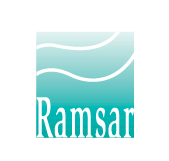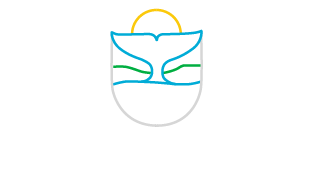MORE ATTRACTIONS
PENÍNSULA VALDÉS
ALL YEAR ROUND
Valdes Peninsula has its own special microclimate, allowing visitors and locals to enjoy its beaches throughout the year. It is a semi-arid desert with little yearly rainfall and a high percentage of sunny days, combined with its natural protection from the winds, Valdes Peninsula offers an unusually high percentage of days for nautical and beach activities. Even though we have cold months (May to August), from September to April the weather is nice, unlike most of the rest of Patagonia.
BEACHES

There are many beaches near Puerto Piramides, each with its own characteristics. It is important to consider the daily tides table to enjoy safely what every beach has to offer. Keep in mind that daily tidal variation in Gulf Nuevo is between 3 and 6 vertical meters. In Gulf San Jose the change can be up to more than 9 meters
PUERTO PIRAMIDES
Protecting the town from cold coastal winds and the eroding effects of the sand lays the Puerto Piramides beach. Surrounded by tamarisks and sand dunes, this is the same beach from which you will embark on nautical excursions for fishing, diving and snorkeling and one of the two places in Argentina from which whale watching tours depart.


PIEDRA GUACHA (LONELY ROCK) - LOS MOLINOS (THE WIND MILLS)
This is the first beach after the end of our town, passing Olazabal Point at the end of the Segunda Bajada al mar road. Walking in an easterly direction along the coast this beach is surrounded by high cliffs and is the second of the local beaches.
About one kilometer past Lonely Rock, the high cliffs slide away from the coast, creating a narrow valley where you can find the abandoned remains of a windmill mark where water was once collected to provide the town. It is an excellent beach for those seeking tranquility, to read a book under the sun in summer time, or to enjoy a hot coffee or mate while watching the whales in winter and spring.
LAS CUEVAS (THE CAVES)
Closing the beautiful bay of Puerto Piramides and enclosed by low cliffs, you can find Las Cuevas Beach that was named after the caves created by huge tidal shifts and the pass of time. The serenity of this beach and the magical landscape make it the perfect place to watch the sun setting in the ocean.

PENINSULA VALDES RESERVES

Valdes Peninsula is a Natural Protected Area that covers 887,775 hectares of the Patagonian Steppe – Mount of plains and plateaus, located in the Department of Biedma, in Chubut Province
It was declared a “World Heritage Site” by UNESCO on December 4, 1999, because it is a site of global significance for the conservation of marine mammals. It is home to an important breeding population of the endangered southern right whale as well as important breeding populations of southern elephant seals and southern sea lions. The orcas in this area have developed a unique hunting strategy to adapt to local coastal conditions.
The Ramsar Convention (UNESCO) declared the Valdes Peninsula Wetlands as Ramsar Site on July 20, 2012, including two coastal sub-sites along the gulfs on either side of the peninsula.
These sites are of vital importance for the feeding of different species of marine birds (both resident and migratory) and shorebirds, which make a stop here during their annual migrations.
It was recognized in May 2012, by the Hemispheric Shorebird Reserve Network, as a “Site of Regional Importance”.
In 2014, UNESCO’s MAB Man and Biosphere program incorporated “Valdes Biosphere Reserve” an area of 1,954,869.30 hectares, which includes Natural Protected Area Valdes Península, Natural Protected Area Punta Loma and Natural Protected Area Punta León. On average, 343,000 people visit the Biosphere Reserve every year, to enjoy the natural wonders of Puerto Pirámides and Valdes Peninsula.
PUNTA PIRAMIDES
Only 5 kilometers from Puerto Pirámides, this reserve has a large rookery that holds a reproductive colony of South American sea lions. During the summer, from early December, the colony houses more than two thousand animals. The sea lions’ colony is located under a cliff, and can be observed from a mirador or observation area with a privileged view. Between June and December it is the perfect platform for land-based whale watching. You can get there walking or driving. The reserve has permanent Rangers, trails and observation areas.


CALETA VALDES
77 km from Puerto Pirámides, after one+ hour driving on a gravel road, you will arrive to Caleta Valdes, a geographical formation of extraordinary beauty. It is a long and narrow body of water that has been naturally closed off by a strip of land, with only a small opening connecting it to the sea.
There you will find a colony of Magellanic penguins (from late September to mid-April. On the southern tip of the Caleta (Punta Cantor) you can see a rookery of Elephant Seals that come to breed from September to November, and to molt (shed their coats) from December to March. You can also see guanacos, maras and rheas that arrive at low tide to the interior islands of the Caleta.
In October and November, the orca can be seen feeding on elephant seals.
The reserve has permanent Rangers, public restrooms, informational signs and trails and a restaurant.
PUNTA NORTE
80 km from Puerto Piramides, after one hour and a half driving on a gravel road, you will arrive to Punta Norte, where there is a large reproductive colony of South American sea lion and a large colony of elephant seals.
Punta Norte reserve is known for the presence of orca whales, who hunt sea lions pups with their spectacular intentional stranding technique from February to May.
The reserve has permanent Rangers, informational signs, trails, observation areas, public restrooms and an interpretation center.


ISLA DE LOS PÁJAROS
Birds island is located 32 km from Puerto Pirámides. It’s a 30 minutes drive: 27 kilometers on route 2 (pavement) and 5 km on a gravel road.
This reserve is home to a great diversity of birds throughout the year, with a peak in spring. The shape of the island inspired Antoine de Saint Exupery to draw the boa that has swallowed an elephant on his famous book “The Little Prince”. Most adults see a hat. But those of us who know that what is essential is invisible to the eye, are able to recognize the snake that ate an elephant.
There is also a replica of the chapel of Fort San José, which was the only Spanish settlement in Valdes Peninsula.
SALT LAKES

SALINA GRANDE AND SALINA CHICA
The big salt lake “Salina Grande” is a great depression 42 meters (131 feet) below sea level, and the small salt lake “Salina Chica” is a depression 35 m (138 feet) below sea level. These salt lakes were exploited to obtain table salt, extracting up to 12,000 tons of salt per year, until they were closed in 1920. The salt reserves of both salt lakes exceed 58,237,740 tons.
About 40 km from Puerto Pirámides by gravel road, you can access the Salina Chica through a path that reaches the shore. The place has informational signs with the history of the place, and provide references for the walking circuits which have different degrees of difficulty.
Salina Chica is the natural habitat of Artemia Salina, a crustacean that lays its eggs when the water begins to evaporate, waiting for new rains to flood the salt lakes. This crustacean gives a pink hue to the salt lakes and attracts flamingos that come to feed. The salt lakes offer the visitors a unique beautiful landscape, whose colors vary depending on the time of day and the season.
ESTANCIAS

Some of Valdes Peninsula estancias offer the possibility of lodging to enjoy the biodiversity and scenic landscapes of Península Valdés in a different way, as well as the typical sheep shearing.

La Ernestina
Estancia La Ernestina is located on the northern most point of Valdes Peninsula: Punta Norte.
The Estancia has 15,000 hectares of farmland in which the sheep graze side-by-side with the wildlife, and 20 kilometers of coast with a high number of marine mammals and birds.
La Ernestina is home to a big Magellanic penguins reproductive colony, sea lion and elephant seals colonies. From February to May it is the best place to see the orca. The terrestrial wildlife also delights the visitors, as well as the immensity of the landscape, the lighthouse, and the out of this world sunsets of Punta Norte.

Rincón Chico
The Estancia Rincon Chico is located 60 km from Puerto Piramides, in the southeast corner of Valdes Peninsula, owning sixteen kilometers of coastline along the Patagonian Sea, one of the richest marine areas on earth harboring populations of right whales, elephant seals, sea lions, orcas -and other smaller dolphins-, penguins, and numerous species of birds and fish.
In October and November it is one of the best places to see the orca.

San Lorenzo
Located in Punta Norte, 80 km from Puerto Pirámides, it has a Magellanic penguin population estimated at 600,000 individuals. The Estancia is also dedicated to the production of Australian merino wool. At the end of September, visitors can observe the different activities related to livestock, including the shearing and the enclosure of the farm carried out with sheep dogs.
DISCOVER PUERTO PIRAMIDES
A MAGICAL PLACE
Follow Us










